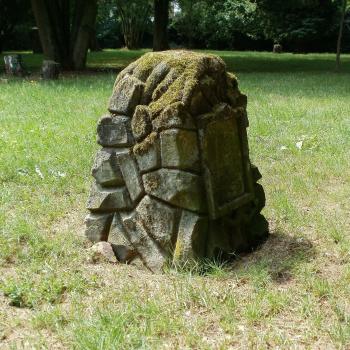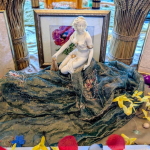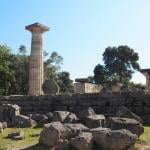I mentioned last week that I highlight the books I read. Recently I began to formalize my highlighting system, or ‘key’, so I could better keep track of information. It’s a lot easier to remember what author said which thing when I have color-coded it in my mind.
This highlighting key is just my own personal one; you should find a setup that works for you if you decide to highlight or take notes. The most beautiful or neat setup will fail if it doesn’t actually work with your brain. Here is a post about three common pitfalls many of us fall into when highlighting that includes a simple system to use if you’re not sure how to start.
Focus & Interest
Similar to what I mentioned in ‘Reading Thoroughly’, the best place to begin is with your purpose. Figuring out what you’re trying to glean from a book will decide what is worth highlighting. This doesn’t mean you should switch up your highlighting key for each book. Definitely not! Changing your framework each time you read a new book will just result in confusion when you go back later and try to remember which color equals what. Rather, what we are focusing on here is what we, personally, are interested in while reading.
This could be historical information (’who did what and when did they do it?’). Maybe you’re more interested in getting down the basic, 101 information on a tradition, in which case terminology and definitions would be helpful along with commonly followed rules and structures. You might be interested in exploring aspects or influences of one religious tradition on another, so you’d mark when you see similarities. The options are really just limited to what you care about learning.
A beginner who isn’t sure yet what they are really interested in could focus on areas where they agree and disagree with the author, allowing them to better develop an understanding of their preferences. A lot of us come to modern Paganism and are excited but overwhelmed by the huge variety and diversity. Figuring out where we diverge from an author can help point us in new directions of learning. We shouldn’t isolate ourselves to just the authors that we largely agree with, though, especially once we’ve grown further into our Pagan practice. How to choose books to read could be its own post.
Here are what I focus on: historical claims/dates; works cited and referenced; the actual praxis or practice of a tradition; the laws or rules of the tradition; and the theological or spiritual framework underlying the book. These are based on interests I know I have, parts of the text I know I am going to want to return to and double-check later on. I’m always trying to improve my system though. For example, I’m considering integrating laws/rules and theological framework, as they often overlap, or making clearer division between the two so I can more quickly categorize and highlight.
All the Colors
There is one more thing that limits your focus, and that’s colors. There are dozens if not hundreds of highlighters in a wide variety of colors, sure, but having a highlighting key of a dozen different things to highlight will get unmanageable. You won’t remember what the colors mean. You’re likely to end up with book pages highlighted like rainbows, and while that may be very Aesthetic it certainly won’t be easy to use for study later.
Picking up a small pack of multi-color highlighters can be a good place to start. I use six colors personally. Green for historical claims, pink for theological framework, blue for praxis, purple for laws, and orange for works cited. I use yellow for quotes I want to memorize. (I will break out my yellow highlighter while doing a first read-through if I see something I really like.)
You don’t have to assign meaning to each color right away. Especially if you are just starting out, it might be better to allow yourself time and freedom to decide what interests you. Instead you could use a single color to mark ideas you really like or want to explore more.
Remember to be picky about what you highlight. Doubly so if you are using just one highlighter. We tend to overhighlight, marking up every last thing we think will be important, and when we return to the book later we end up baffled by our haphazard marks. Unless you have a clear reason for highlighting something hold off on it.
It is easiest to be precise in our highlighting when we know what we are highlighting for, hence the importance of figuring out our purpose before we even pick up those lovely pens. I have the easiest and quickest time highlighting in categories that are clear-cut, like historical claims/dates and works cited. Praxis usually isn’t too difficult. ‘Laws of the tradition’ and ‘theological framework’ tend to be stickier.
The End Goal
The best results from highlighting come when you know what your goal is. Are you trying to memorize information for a test? Knowing what information will be on the test will help you highlight effectively rather than trying to stuff your brain with every last detail. Are you looking for connective tissue across multiple books? Or maybe you’re comparing historical accounts from modern Pagans to see how they contrast. Maybe you’re reading to learn a completely knew skill, or maybe you’re reading in a topic you are well-versed in to discover if the book is worth recommending to others.
The key I created appeals to what interests and goals in learning. It is set up in a way that is intuitive to me. That is the most important thing. It is okay to adjust your methods and key so they better suit how you actually read and learn. Try to stick with your system for at least a little while. Shifting too soon or too often will have made key pointless. You’ll also figure out what isn’t working and why if you try it out for a time.
















